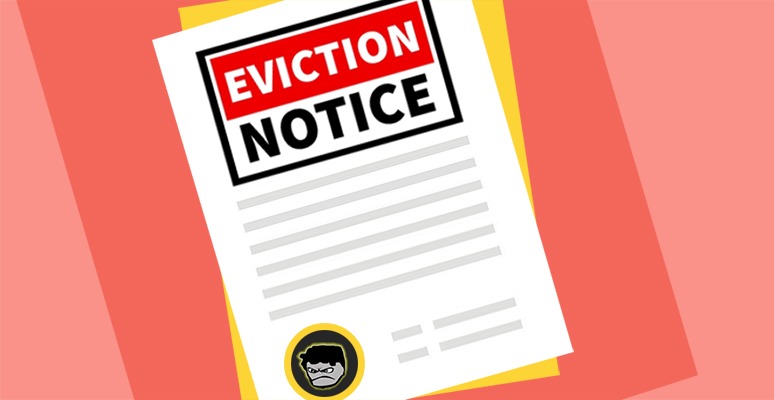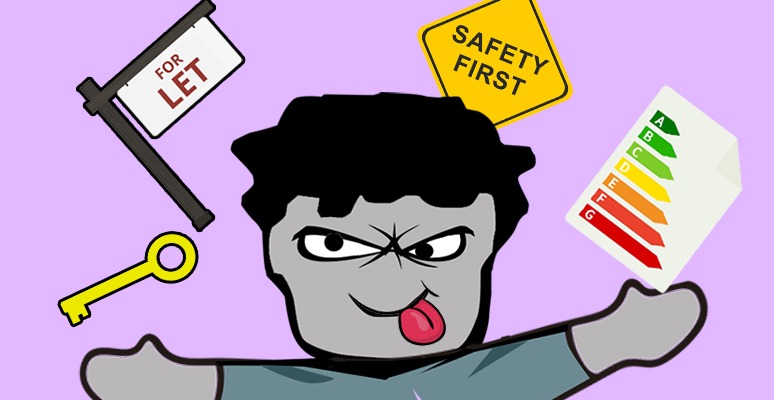I ‘spose every landlord can have their own special recipe for ‘tenant move-in day’ to a certain degree. However, by and large, most landlords should be working off the same hymn sheet, although there’s no harm in rearranging the order of the words (but as long as they get attended to at some point during the day), or adding a few extra notes.
Ultimately, there are mandatory tasks that should be ticked off the list on the day your new tenant moves in, particularly those required by legislation, while there are other tasks that could be thrown into the ‘optional’ bucket, normally because some landlords like to be more stringent than others, and/or because certain circumstances require it.
So, in this blog post, I’m going to share my recipe, and breakdown my ‘tenant move-in day checklist’
Before I started to compile my ‘tenant move-in day checklist’, I actually scoped out what other reputable publishers’ in the lettings space had tossed into their list. Not necessarily for inspiration (because I already like my recipe), but just to see if we were all in tune in and singing out the same hymn book.
I can confirm that we certainly are not!
I’m not going to call anyone out – ’cause this ain’t that kind of show (today) – but I will say that I was less than inspired by what I saw in the top 10-15 results in Google, when I searched for “Tenant move-in day checklist”
I don’t even think they were produced by actual landlords, but more so generic marketing ‘content creators’ Simply, there just seems to be a lot of gaping holes, which should be plugged with critical information. In one way it’s a neat discovery, because it means I’m able to improve on what’s already out there, which can only be a good thing, but on the other, I feel bad for anyone that gobbled up that steaming pile of shit and followed it to a T, without adding any extra sense.
Crikey, I sound bitter.
Anyways, the checklist….
Tenant Move-in Day Checklist
| Item | Task | Description | Legal Requirement |
|---|---|---|---|
| 1 | Empty property | Ensure property is completely empty (unless it’s a furnished property) and don’t leave behind any unnecessary clutter or furniture. The point to remember (which many landlords neglect) is that the more you provide with your property, the more you’re making yourself responsible for; the more reasons you’re creating to be called upon when something falls on its knees and crumbles into disrepair. So only provide the essentials. No more, no less. | |
| 2 | First month’s rent | Ensure the first month’s rent is paid in full. It is highly inadvisable to proceed with the move-in otherwise. | |
| 3 | Tenancy deposit | It is highly inadvisable to proceed with the move-in until you have received the full deposit (presuming you require one). | |
| 4 | Tenancy agreement contracts | Ordinarily, tenancy agreements would have already been signed and both landlord and tenant(s) should have a copy, but if not, this is as late as you should leave it. | |
| 5 | Guarantor agreement contracts | Ordinarily, guarantor agreements would have already been signed and both landlord and guarantor should have a copy, but if not, this is as late as you should leave it. | |
| 6 | EICREngland only | If you haven’t done so yet (a copy should be shown to prospective tenants before they occupy the premises), provide tenant with a valid copy of the Electrical Installation Condition Report. | |
| 7 | EPC | If you haven’t done so yet (a copy should be shown to prospective tenants before signing an AST), provide tenant with a valid copy of the Energy Performance Certificate. | |
| 8 | Gas safety certificate | If you haven’t done so yet (a copy should be shown to prospective tenants before they occupy the premises), provide tenant with a valid copy of the Gas safety certificate (CP12). | |
| 9 | ‘How to rent’ guideEngland only | Provide tenant with the latest copy of the Government issued ‘How to rent’ guide. | |
| 10 | Smoke & CO alarms / testingEngland only | This is a legal requirement for rentals in England, but really, all sensible landlords should:
| |
| 11 | Mains off switches | Show tenant how and where to turn off the following services by the mains:
| |
| 12 | Inventory | Provide the tenant a copy of the inventory report, and walk them around the property, pointing out anything you’ve noted down. This gives you and the tenant an opportunity to check that everything is in the condition described. You may also add in any new details highlighted. It’s also useful to take supporting pictures. Both landlord and tenant should sign and date your copies to confirm that the inventory is accurate and agreed upon. | |
| 13 | Demonstrations | While most things in the property won’t require demonstrations because they’ll be self-explanatory, there are certain items which you may want to talk through with the tenants, such as white goods, heating/boiler functions, and other quirks that may need explaining. If you have instruction manuals for any of the white goods or other mechanical components provided with the property, available them in a convenient place for them. | |
| 14 | Information sheet | Provide tenant with the following details:
| |
| 15 | Keys | Handover a set of keys and ensure they work. | |
| 16 | Meter readings | Both tenant and landlord should take the latest meter readings, so the right people pay for the right amount of energy usage. It’s recommended to take photos of the readings with timestamps to avoid any confusion. | |
| 17 | Notify utility suppliers | Ensure all utility suppliers are aware of the residents and provided with any necessary meter readings:
| |
| 18 | Notify insurance provider(s) | Ordinarily, insurance providers (e.g. building, contents, RGI etc) should have already been notified of the change in circumstances (i.e. new tenants), but if you haven’t done so by now, make sure you contact them. Failing to do so may invalidate your policy and further claims could be refused as a result. |
Did I miss anything out? Let me know…
Disclaimer: I'm just a landlord blogger; I'm 100% not qualified to give legal or financial advice. I'm a doofus. Any information I share is my unqualified opinion, and should never be construed as professional legal or financial advice. You should definitely get advice from a qualified professional for any legal or financial matters. For more information, please read my full disclaimer.
Any documents you download from this website are just examples of its kind and should be checked by a professional. I give no warranties or representations concerning the documents, and accept no liability in relation to the use of the documents.


 Landlord Products / Services
Landlord Products / Services



























I always appreciate your posts and the resources you offer. I just wanted to caution against the order you have stuff listed above and mention one new legally essential item you left out.
New tenancies now require that the EIRC is also shown to the tenant before signing AST. In addition to this, the EPC and GSC should also be shown to tenant BEFORE signing AST.
You might also want to include PI and that the tenant should sign something saying they've received it and all the other paperwork above, again, before signing AST.